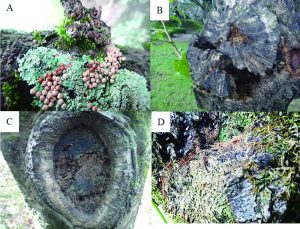Abstract / Introduction / Summary:

The ant activity on trees was surveyed in a suburban park in 2020 after the establishment of the famous tramp ant Technomyrmex brunneus, which was first noticed there in 2009. This species was observed on 102 trees (66.7%) of a total of 167 trees surveyed. The data are compared with those taken in 2001 before the invasion of T. brunneus. Both surveys were conducted in the same sites in the park (8 sites representing dif- ferent habitats) with a similar method. The total num- ber of species found on trees was 15 in both years, and species composition was not very different, with 11 species common to both. However, the frequency of each species was quite different. The most drastic was the complete disappearance of Camponotus vitiosus that often nests and mainly forage on trees. Two arbo- real species, Crematogaster matsumurai and C. vagu- la, decreased in both frequency (from 65 trees to 1 tree in the former; 28 to 3 in the latter) and the number of nest-bearing trees (47 to 1 and 19 to 2 respectively). The activity of two ground nesting ants, Formica sp. C and Pristomyrmex punctatus, on trees has also been drastically reduced. In 2020 another tramp ant, Tetra- morium bicarinatum, was observed to be rather com- mon on trees of some neighboring sites (found on 32 trees, of which 25 had nests), while the related native species T. nipponese seems to have disappeared. It is interesting to note that Technomyrmex brunneus and Tetramorium biarinatum never shared the same trees. These two tramp species might compete or avoid each other for foraging and nesting sites.
